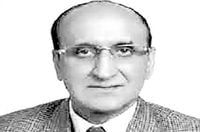The stage is set for a seismic shift in India’s democratic landscape, as the Supreme Court and the Election Commission of India (ECI) grapple with the complexities of voter list revisions and the looming delimitation exercise. With Bihar’s Special Intensive Revision (SIR) of electoral rolls in the spotlight and the long-awaited nationwide delimitation process hinging on the delayed 2026–2027 census, the nation finds itself at a crossroads—one that could redefine representation for over a billion citizens.
On October 7, 2025, the Supreme Court delivered a clear message regarding the boundaries of judicial intervention in electoral affairs. According to India Today, Justices Surya Kant and Joymalya Bagchi, while hearing petitions challenging the Bihar SIR, asserted, “Conducting SIR is the prerogative and exclusive domain of the Election Commission. If we come in between, this would be interfering.” This statement underscored the judiciary’s respect for the ECI’s constitutional mandate and set the tone for the ongoing debate about electoral integrity and institutional autonomy.
The SIR in Bihar, a state often seen as a bellwether for national trends, has attracted scrutiny due to its scale and timing. The ECI recently announced dates for the Bihar elections and revealed that preparations are underway to launch similar revisions across all states. However, the process has not been without questions. The Supreme Court bench pressed the ECI to clarify the status of 2.1 million voters added to Bihar’s final list after the SIR—were these individuals previously removed, or are they entirely new entries?
The ECI’s counsel responded that most of the names added after the draft list was published on August 30 were new voters, emphasizing that “no complaint or appeal has been filed till now by any excluded voter.” Yet, the Court was not content to let the matter rest there. The bench requested detailed information on the 366,000 voters excluded from the final roll and insisted that every individual has the right to appeal their exclusion. As reported by Bar and Bench, the Court stated, “Each individual has a right to appeal.” The matter was scheduled for further hearing on October 9, 2025, signaling ongoing judicial oversight even as the Court reaffirmed the ECI’s primary role.
These developments in Bihar are unfolding against the backdrop of a much larger and more contentious issue: the forthcoming nationwide delimitation exercise. As detailed in an October 7, 2025, article by Ravindra Garimella and Amal Chandra, the next delimitation—scheduled to follow the repeatedly delayed 2026–2027 census—represents one of the most consequential moments for Indian democracy in decades. Delimitation, enshrined in Article 82 of the Constitution, is intended as a periodic recalibration of parliamentary and assembly constituencies to reflect decadal population changes. Its purpose is simple yet profound: to ensure proportional representation and uphold the constitutional promise of reserved seats for Scheduled Castes and Scheduled Tribes.
Yet, this process has been frozen since the 42nd Constitutional Amendment in 1976, a move originally designed to incentivize population control. The freeze was extended to 2026 by the 84th Amendment, but the unintended consequence has been a dramatic mismatch between representation and demographic reality. Constituencies in populous states like Uttar Pradesh now average over three million voters, while those in Tamil Nadu average fewer than two million. As the article notes, “a voter in Chennai effectively carries more electoral weight than one in Lucknow,” a situation at odds with Article 81’s mandate for equality in the value of every vote.
The Supreme Court’s July 2025 ruling reaffirmed that nationwide delimitation cannot proceed without the publication of new census data, except in extraordinary cases such as Jammu and Kashmir. This underscores the critical importance of the census itself, which has been postponed multiple times since its original 2021 schedule. The government now projects a 2026–2027 window, but this delay has cascading effects: it perpetuates outdated representation, postpones the implementation of the 106th Constitutional Amendment (which promises one-third reservation for women in legislatures), and stalls the demand for a caste census—an issue closely linked to the delimitation process.
The political and social implications of delimitation are profound, with the most contentious fault line running along the north–south divide. Projections suggest the Lok Sabha could expand from its current 545 seats to as many as 848, with Uttar Pradesh potentially seeing its allocation rise from 80 to 143, and Bihar from 40 to 85. Conversely, southern states like Kerala and Tamil Nadu, which have achieved lower fertility rates through decades of investment in health and education, may find their representation diminished. Leaders in the South argue that “successful family planning will be punished with diminished parliamentary influence,” even as these states contribute disproportionately to national revenues.
Northern leaders, on the other hand, contend that equitable representation is the foundation of democracy. They argue that “vast constituencies with diluted voices... deny citizens in populous states the democratic weight they deserve.” The government has sought to reassure all sides, promising that no state will be marginalised and that safeguards will be introduced. However, as the article points out, “these assurances remain broad and general, while the underlying tensions continue to fester.”
The scope of delimitation extends beyond the Lok Sabha to state assemblies and reserved constituencies. Population shifts and migration have altered the distribution of Scheduled Castes and Scheduled Tribes, making past boundaries obsolete. Previous delimitation cycles have sparked local disputes over the allocation of reserved seats, and the next round is likely to be even more contentious.
Economically, the stakes are no less significant. Southern states, which contribute close to 30% of India’s GDP, worry that reduced representation could weaken their bargaining power in national resource allocation. The risk is that widening the North–South divide could undermine both political harmony and economic growth, threatening the federal fabric that has held India together since Independence.
To address these challenges, several proposals have emerged. One is to expand the Lok Sabha to its maximum feasible size, allowing underrepresented states to gain seats without reducing others’ allocations. Another is to reform the Rajya Sabha to serve as a more effective counterbalance, preserving the voice of smaller states and regions. The article stresses the need for transparency, inclusivity, and consensus-building in the delimitation process, calling for an all-party dialogue and a modernised, auditable electoral roll system.
Ultimately, the success of the forthcoming delimitation will depend on the government’s ability to execute a timely and accurate census, incorporate caste and migration data, and foster a spirit of consensus. As the article by Garimella and Chandra concludes, “If approached with transparency and consensus, delimitation can rejuvenate Indian democracy... If mishandled, it risks widening regional divides, corroding trust in institutions, and unraveling the federal compact.”
The coming months and years will test India’s commitment to fair representation and democratic renewal. Whether through the careful revision of voter rolls in Bihar or the nationwide redrawing of electoral boundaries, the choices made now will shape the future of the world’s largest democracy for generations to come.




